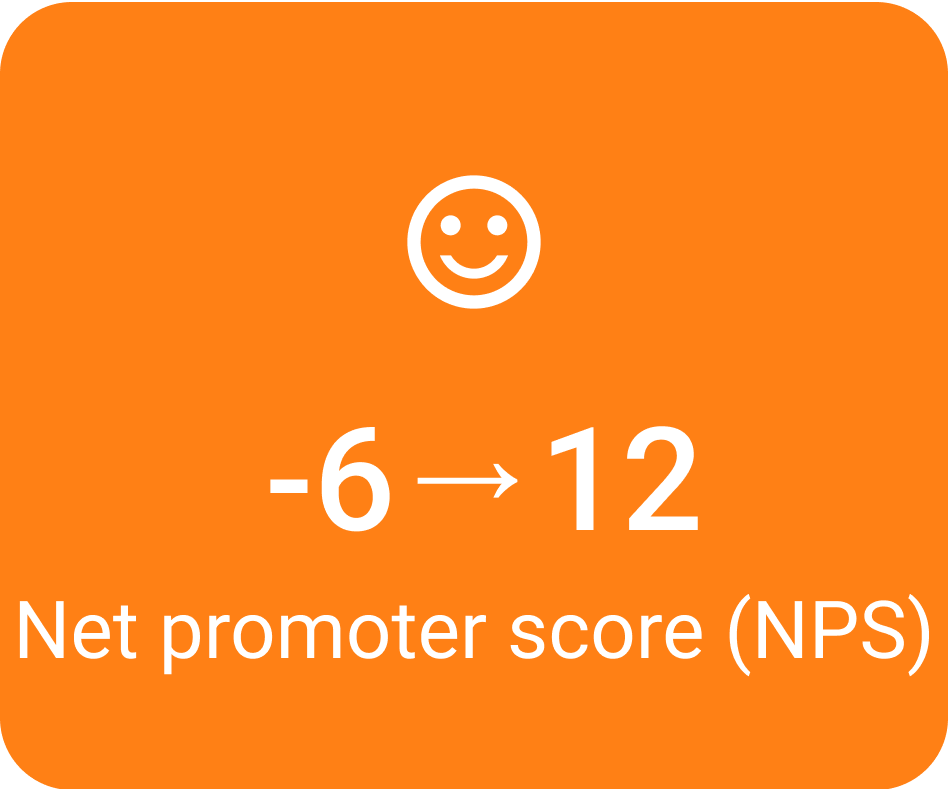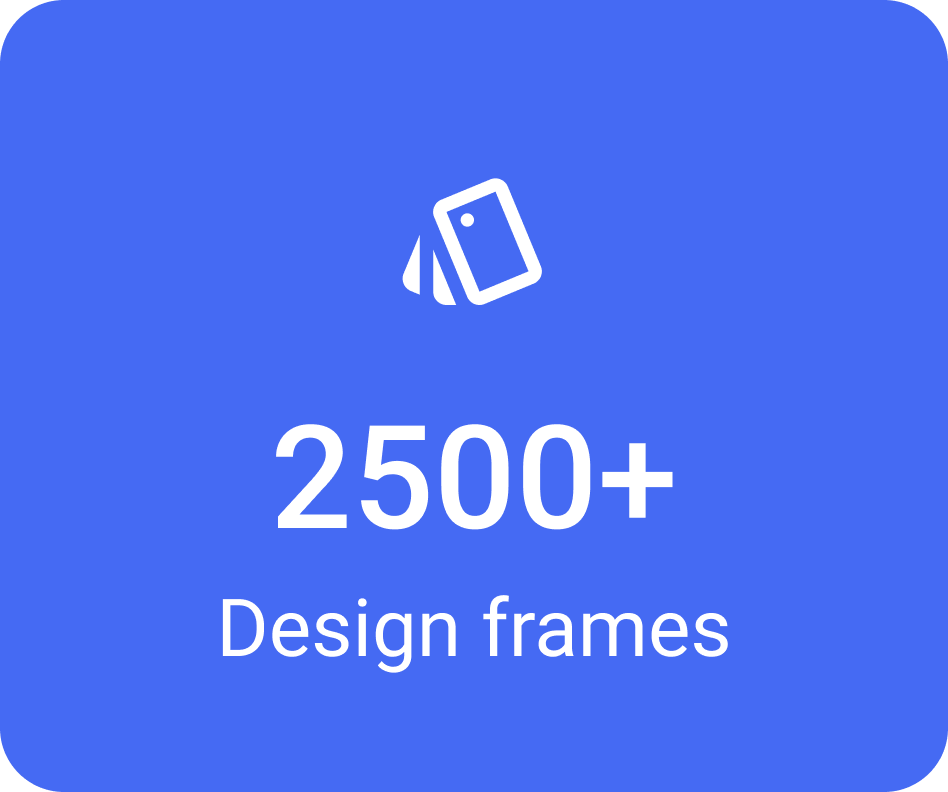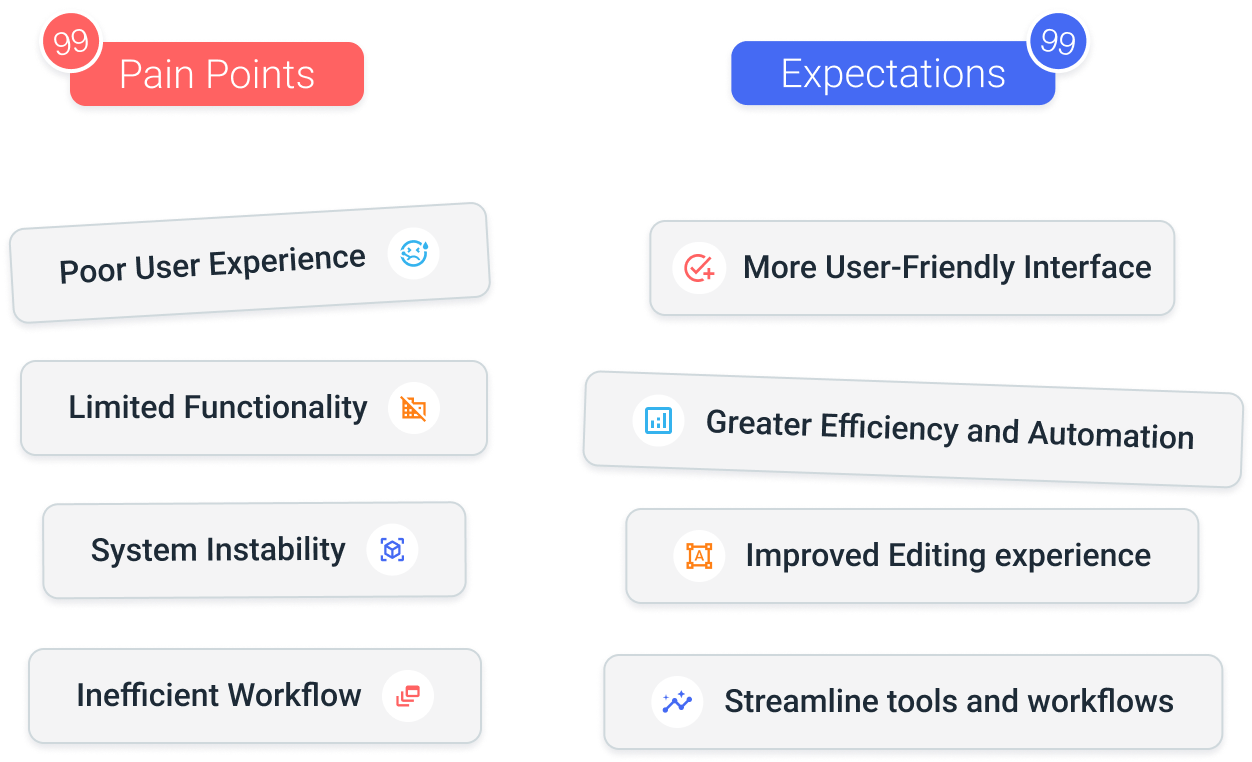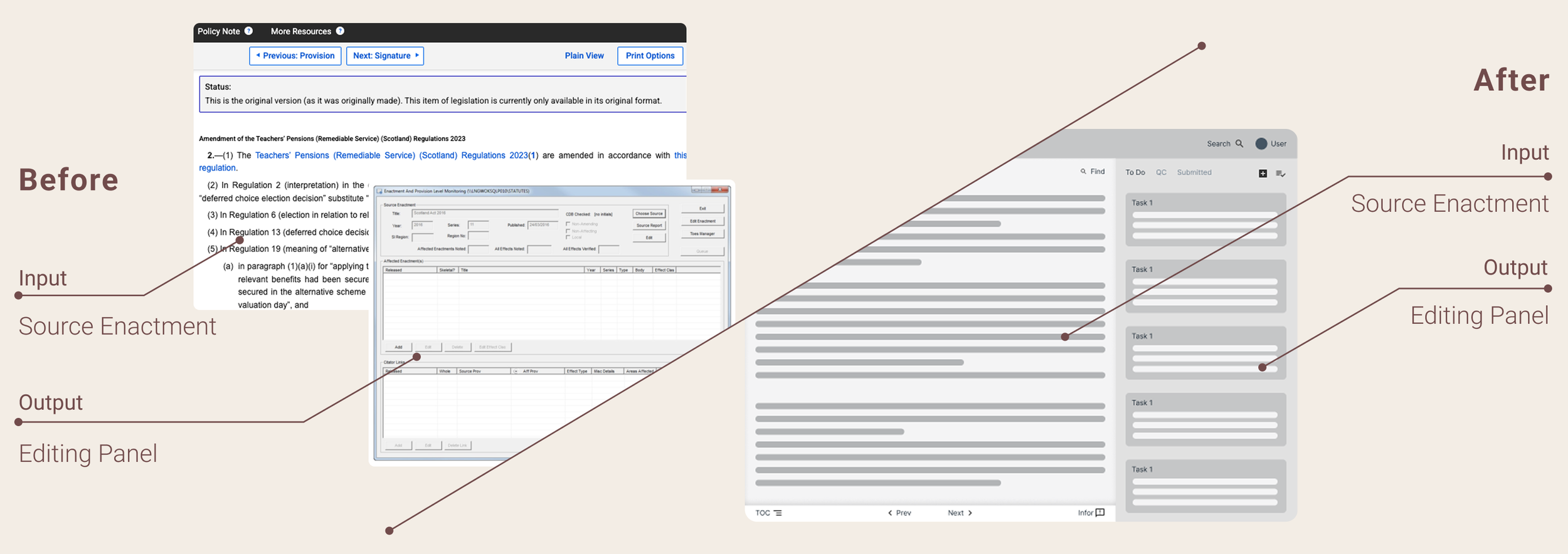Revolutionize Workflow with an AI-Driven Platform
Overview
For over 30 years, the UK legislation service has relied on an editorial team to edit and update content from official sources, using more than 10 tools. Our goal was to redesign this complex workflow—integrating AI automation, consolidating the tools used across different scenarios.
Duration
Team
1.5 years
4 UX Designers
My Role
User Research
Feature Requirement Define
UX Design
Component System Design
Tools
Figma
Miro
Teams
Maze
Achievements
Process and Timeline
From their roles and use cases, we identified 10 key features to help us understand the business logic from a high level and define product requirements. We also used these insights to prioritize development based on business impact and estimate the delivery timeline.
Problems
At the start of the project, the product vision was still unclear. Therefore, we began by gathering feedback on their existing pain points and expectations for the future product.
Solutions
1. 8 tasks → 6 automated by AI
All eight tasks were initially manual. With AI-driven automation and pre-editing, six are now fully automated, leaving only two rarely used cases requiring manual input. AI-generated tasks also replace slow, multi-tool workflows, greatly improving efficiency and user experience.
2. Consolidated Operation Layout
During demo sessions, I noticed editors had to work with two separate windows to view source enactments and create affected links. To streamline this, I introduced a two-column interface — input on the left, output on the right — aligning with editors’ natural workflow and reducing context switching.
Scenario Study
We conducted over 180 hours of video meetings to deeply explore business scenarios and user workflows. I led the design of 5 out of 10 key features — including 1 high, 2 mid, and 2 low-priority — and contributed to later-stage iterations, covering around 40% of the total project scope.
Mid-Fi Explorations
High-Fi Prototype
I was responsible for designing 5 of the 10 key features, including 1 high-priority, 2 mid-priority, and 2 low-priority ones. I also contributed to iterations during the UAT phase. The prototype shown here represent selected scenarios from these features.
Core Page Anatomy
As we uncovered more diverse workflows, we identified scenarios where users needed to view a Source Enactment, Target Enactment, and a To-Do List at the same time — prompting the design of a three-column interface.
Collaborative Design System
To enable smoother collaboration with other designers and to support future similar projects, we initiated the setup of a shared design component library in the middle of the project. I was responsible for part of its development and maintenance.
Takeways
🎯 From Uncertainty to Clarity
Starting from an unclear product vision, I helped define key features through user research, NPS analysis, and workflow mapping. This process taught me how to navigate ambiguity and structure product direction based on real user needs.
🧩 Modular Thinking for Collaboration
Working in a team of multiple designers, I initiated a modular design system that improved design efficiency and consistency. This system also laid the foundation for future reuse across different regional platforms.
📚 Designing with Domain Knowledge
To design meaningful interfaces, I had to study UK legislation types and provision structures. This experience strengthened my ability to translate domain-specific logic into intuitive product flows.
🤝 Scalable Team Collaboration
Through over 180 hours of video calls and constant alignment with cross-functional teams, I honed my communication and coordination skills—especially in complex enterprise environments.
🧠 User-Centered Solutions for Complex Tasks
By rethinking layouts (e.g., dual and tri-column views), integrating AI-assisted features, and supporting collaborative task handling, I learned how to break down dense workflows into manageable, user-friendly experiences.








